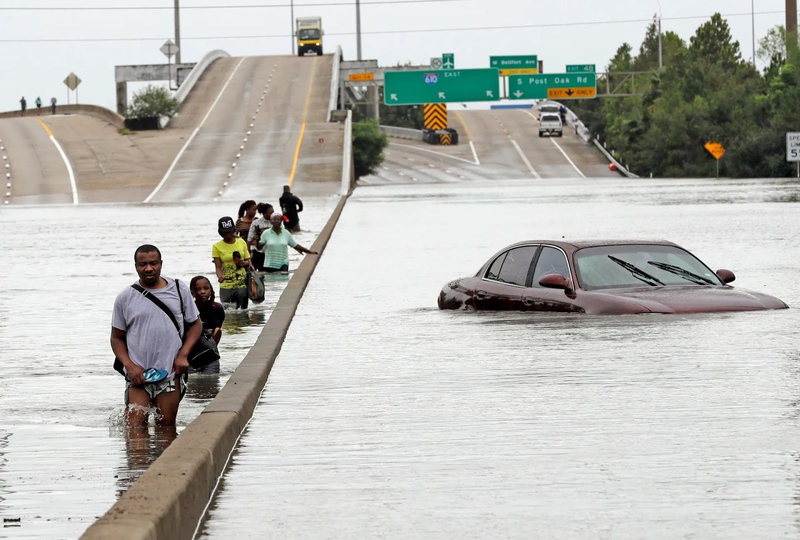HGAC is barrier to Houston flood resilience: Vote Yes Prop B
It is this gross underrepresentation that enabled H-GAC to funnel money away from Houston, its most populous center and the area with the most homes flooded by Hurricane Harvey; the exact issue the CDBG-MIT funding was issued in response to.
Every person in Houston and Harris County knows the impacts of Hurricane Harvey. What many might not know is that in 2020, the Houston-Galveston Area Council (H-GAC), the council of area elected officials that decide how certain federal dollars are spent in our area, was granted over half a billion dollars for Harvey recovery in the 11 counties that make up its constituency.
When the council created the process by which they would determine which disaster risk-reducing projects would receive funds, their method was not unusual, except for one major criteria. Their formula was created to allocate funding to cities and counties in the H-GAC region, “with the exception of Harris County and cities (or portions of cities) located within Harris County.”
To date, out of a total of $4.2 billion of Community Development Block Grant Mitigation funds (CDBG-MIT), federal funds specifically allocated to help us better weather storms, the city of Houston has been awarded less than $90 million; not nearly enough.
Don’t miss out! Get top Black headlines in Houston/Texas/America in your inbox Monday-Saturday.
Why does this happen? Despite a significant majority (over 57%) of the residents of the 11-county council area living in Houston, the city holds only 11% of votes.
It is this gross underrepresentation that enabled H-GAC to funnel money away from Houston, its most populous center and the area with the most homes flooded by Hurricane Harvey; the exact issue the CDBG-MIT funding was issued in response to.
If Houston wants to remain a city of national and global importance we need to build for the future. The only way we will be successful at this is if we can protect our communities with state-of-the-art drainage and flood mitigation solutions that keep Houstonians out of harm’s way ahead of the next disaster—and we need it now.
The city is already behind on flood protection and the increasing likelihood of extreme rainfall means that falling further behind is a serious threat. Rains that were modeled to come once every 100 years in 2010, are now predicted to come at least once a decade. 500-year rain events have occurred six times in the last 25 years.
This year, after three years of campaigning by the Northeast Action Collective, the City of Houston took a major step to reduce flood risk and created a “ditch re-establishment program” that will return responsibility of infrastructure maintenance to the city government. However, the city cannot act alone.
Houston is still waiting for its fair share of this money allocated by the U.S. Congress for flood mitigation through the CDBG-MIT funding. If H-GAC is not reformed it may well do the same thing with bi-partisan infrastructure bill money that will soon flow into Texas.
Luckily, Proposition B offers the opportunity to make sure that this never happens again. It may even create an opportunity for some of the unspent CDBG-MIT funds held by the COG to go to LMI communities in Houston. This November Houston voters have the opportunity to address this major obstacle to the critical investment opportunities that Houston needs and deserves by voting for Proposition B.
Prop B will enable Houston to renegotiate the way the we are represented in H-GAC, and prevent this happening after our next disaster.
As January Advisors has explained, H-GAC exists to engage in planning that “outlasts elected officials, that has legacy.” Right now, that legacy is not one that serves Houstonians.
As longtime flood protection advocates, environmental justice organizers, and members of this community, we call on Houstonians to vote for Proposition B so that we can get the flood protections we need.
Op-ed written by Doris Brown and Ben Hirsch of West Street Recovery
Support the Defender
Our pledge is to elevate solutions, share successes, and amplify the experiences of Black people. We cannot do it alone.



